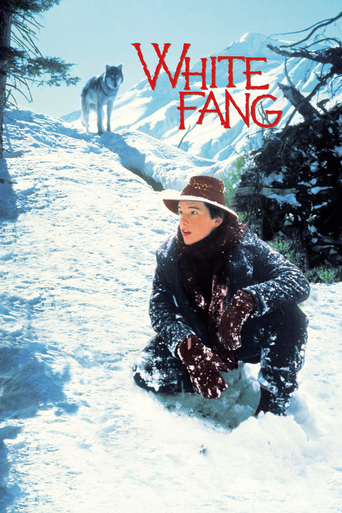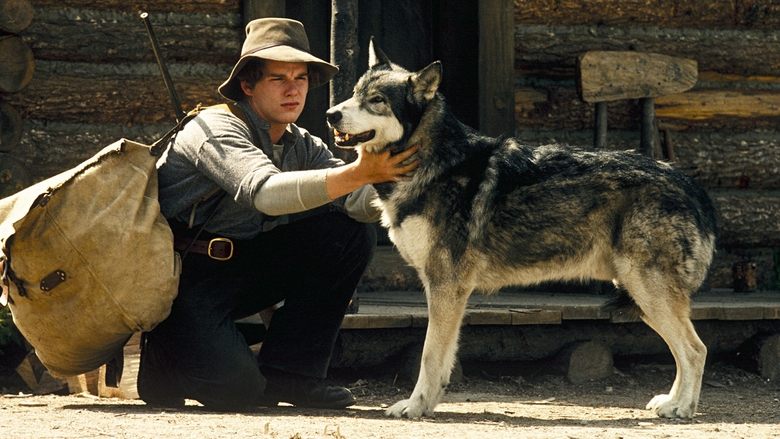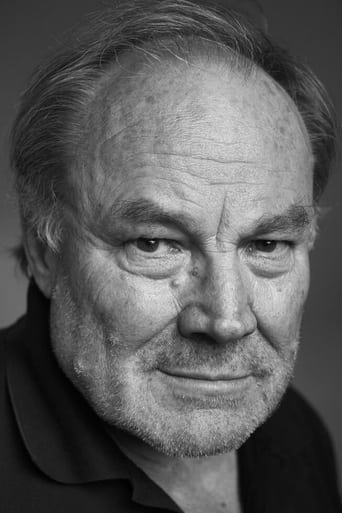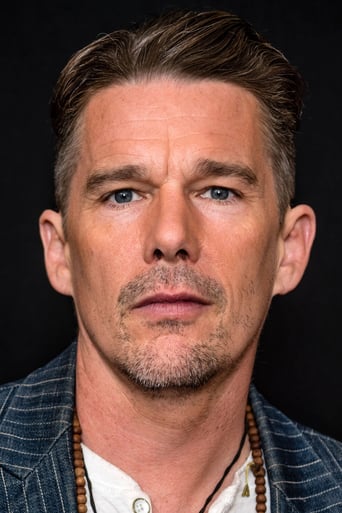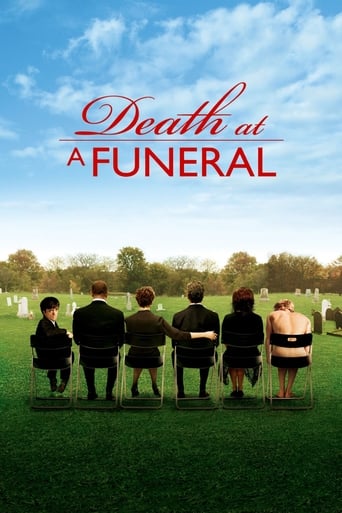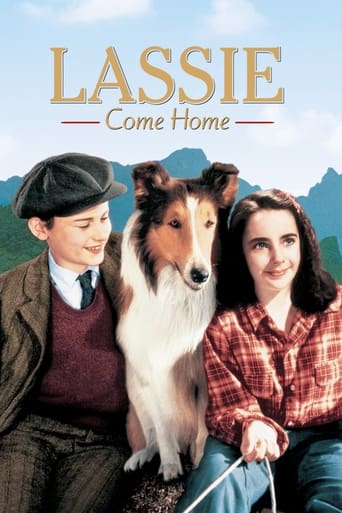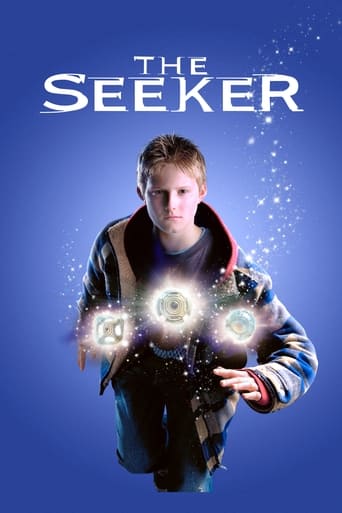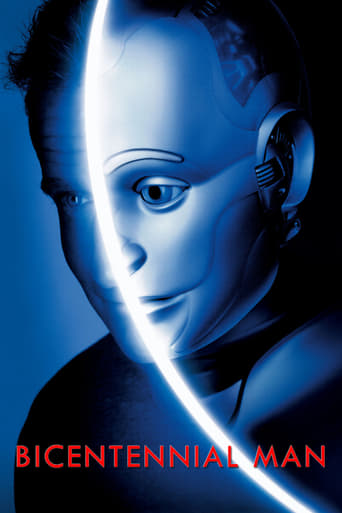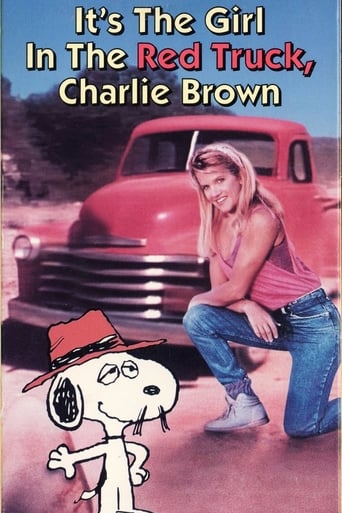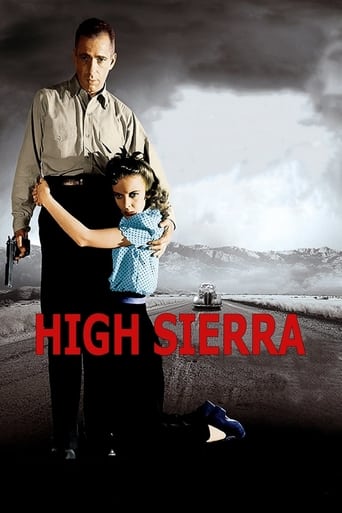White Fang (1991)
Jack London's classic adventure story about the friendship developed between a Yukon gold hunter and the mixed dog-wolf he rescues from the hands of a man who mistreats him.
Watch Trailer
Cast
Similar titles

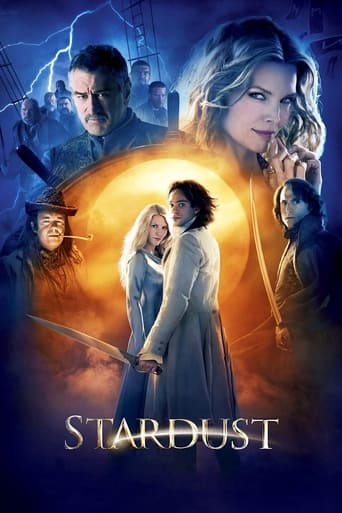
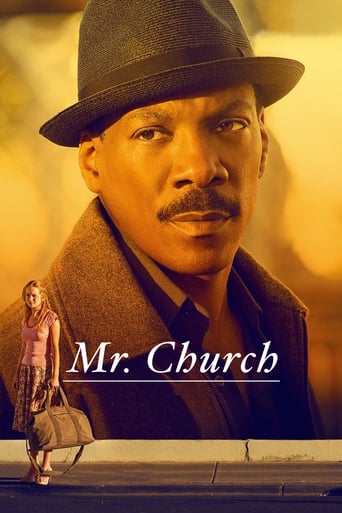
Reviews
the audience applauded
Really Surprised!
A Major Disappointment
It’s sentimental, ridiculously long and only occasionally funny
Its not a difficult film to follow. The USA state of Alaska is in Canada. To be specific: USA West Coast-Northernmost state, Washington, borders with Canada British Columbia. Directly above the state of British Columbia, Canada, is Yukon state, Canada. West of Yukon state, Canada, borders once more with USA, state of Alaska of USA. Which is where one of two wolf stories, this one, White Fang, begins. THE OTHER WOLF STORY IS BUCK, aka: CALL OF THE WILD. Its an American story: HOWEVER: the word "Yukon" used by the characters in the film is instead a state in Canada. YOU NEED TO SHOW YOUR PASSPORT TO CROSS FROM ALASKA TO YUKON. Another point is: (Using a map) You will notice that Jack London's story is superstitious: THE OWNER OF THE WOLF ALWAYS IS IN PERIL AT- WHAT PLACE IS NEVER CALLED BY NAME(name of city) "somewhere in the Yukon wilderness". Look at the map of Canada again: "Wilderness" is state EAST OF YUKON STATE what state extends NORTHWARD UNTIL THE NORTH POLE AREA. Once you realize this: You will know that the suspense/superstition is nothing more than walking in the Kalahari desert without using a tour agency. The Canada Government did not built roads nor cities in THAT PARTICULAR STATE OF Canada. HELL! IF THIS WAS WHAT THE USA GOVERNMENT DID WITH California WHAT THE Canada GOVERNMENT DID WITH N- STATE OF Canada THEN THE WOLF OWNER WOULD BE IN THAT SORT OF PERIL IN DOWNTOWN LOS ANGELES CITY!!!
An emotional person often dreams about/craves for a life that's allows him to stay with his dear ones forever, without being forced to move on. The movie fulfills this desire.A glimpse of the harsh Nature, surreal panoramas of mountains, rivers etc., the abhorrent human tendencies and innocence and love struggling to survive their unending ordeals are captivating. The boat trips by Alex and Jack, their visit to the Indian village which is calm and content, eating and sleeping under the open sky, the wood house by the river. The dog fighting not only devastates but also infuriates, the misanthropist was rising ! The way Beauty Smith vexes and starves White Fang leaves heartbroken.Bart, The Bear and Jed have played their roles impeccably. Yes, there are several moments that are unconvincing e.g: The bear retreats when a wolfdog gets enraged.The fatherly Alex and the teenager, dreamer and emotionally impulsive Jack touch your hearts. The eventual maturing of Jack is depicted lovably in the movie - steadily befriending White Fang, driving him away for his own good. Alex who is initially uncomfortable with Jack but later own takes a liking for the boy - he gradually opens up and stays with Jack to assist him realize the dream of the gold mine. Jack, as an emotionally attached and honest person, enlists Alex as a partner in the mine, while reading this, a slight smile and good feel reflects on his face. When at the eleventh hour, Jack decides to stay back, Alex smiles lightly, acknowledging in a fatherly way, the feelings of a young boy. I often hate unrealistic endings, even if happy, however, there are times when you wish to shun the logic and pray for a happy end.The background score suits the moods of the movie, the cinematography is memorable.To summarize, it's an emotional journey, emotions that neither understand nor care about the rational or the practical world.
White Fang is a wonderful look at the relationship between a young man (Jack) and his dog. The Jack London tale tells of this unusual friendship as only he can tell it. Set in Alaska during the gold rush at a time when men were out to make their fortune in gold mining there comes a touching story of how Jack befriends a wolf being abused and used in those ruthless dog fights. They eventually bond with each other until Jack and his partner (Alex) strike it rich. Then it is time to say goodbye to the the wolf as both men return to civilization. The scene where Jack must depart from his dog is so touching it hurts to watch.Ethan Hawke, a young actor I have always admired, plays Jack. He gives a touching performance filled with honesty and reality. His partner, played by Klaus Maria Brandauer, is wonderful as his friend. He too gives a masterful performance, simple and touching as well. James Remar (Beauty) is wonderfully evil as the man using White Fang to bait the dog fights. And of course there is White Fang, played by a dog named Red. He steals the show as they say. A truly wonderful adventure film with excellent acting, gorgeous scenery of Alaska and well written and directed from the Jack London novel. One of the best.
POSSIBLE SPOILERS After reading both of Jack London's novels CALL OF THE WILD and WHITE FANG in that order, I felt it necessary to see the film again since I hadn't seen it for years.Expecting nothing but a regurgitated clone of lassie from the mouse house, I was pleasantly surprised to find that the film followed the storyline in its own right (though with some flaws).We start it in the Klondike Gold rush in the Yukon in Canada with Jack Conroy (Ethan Hawke pre-beard) arriving in the Yukon. He joins with a couple of old friends of his father to join in heading for their claim. At the same time, a young wolf cub is being brought up in the wilderness by his mother who, in a sequence concerning Conroy (Hawke) is shot and injured when she tries to lure one of Conroy's friend's dogs away to attack (and undoubtedly eat).And now comes the tarnishing part of the film that is the one part that I loathe and despise. She drags herself back to her cub before dying in front of him and leaving him to fend for himself in the wilderness. It's very frustrating to see Disney resort to the Bambi-esquire cliché of killing off the mummy to tug at the heartstrings, especially since there's no evidence of this in the book, his mother was actually an important character, and not to forget that most of us will have seen it all before! The sequence in the book that this campfire part is based on, was before White Fang was even born, and the gradual growing climax that it built in the Jack London novel is terrifying! (Though I suppose that has no place in a Disney film.) If you intend to read the book, I won't spoil it for you!Afterwards, Conroy comes across the pup in certain circumstances where he has been taken in by the Indians and changes hands to take part in illegal dog-fighting before winding up in the hands of Conroy to rehabilitate him. These plot lines follow fairly accurately to the original London novel, albeit with some deviations, e.g: White Fang's mother was called Kiche and was taken in by the Indians, only to be separated from White Fang when she was sold to another Indian, Jack Conroy never appeared in the book, though he is similar to Weedon Scott's character in the novel.The ending to White Fang was bugged with one or two clichés, in that with a gold claim freshly unearthed and ready to leave for California, he lets him "free" because "he'd be miserable in a city" though White Fang went TO a new urban home later. We're not too sure why Jack decides to stay in the wilderness either, especially when there's a new life as a rich man in California waiting, except for White Fang to return to him and for them to be reunited (as they are) and a possible instinct of this happening, but it's not very well explained.It's also totally different to that of the ending of the book (that ends in California in the same way Call of the Wild starts there), but before I condemn it, I still have some praise for it being not so lassie-esquire to the effect of being nauseating, satisfying in its own right and closing the story nicely.Perplexingly though, the end tacks on a concluding text from the Defenders of Wildlife that says that "JACK LONDON'S White Fang is a work of fiction. There has never been a documented case of a healthy wolf or pack of wolves attacking a human in North America. Because wolves were systematically eliminated throughout most of the United States during our early history and continue to be persecuted today, a nationwide effort is underway to reintroduce wolves into wilderness areas and insure their survival for generations to come." Firstly, White Fang is set in Canada (sorry to be picky but people may still think that wolves have attacked people elsewhere).Secondly, I don't see why the film needs an epilogue like this - it isn't a nature documentary, it's a story! Maybe this is because the film is from 18 years ago when people were more prejudiced about wolves, and though I think wolves are great animals and it is important to protect them, it seems unnecessary to tack this information on at the end!In general, I would recommend this film, whether you've read the book or not. Despite the faults I've listed and the Godawful Bambi-style rubbish, White Fang does have its saving graces. The relationship between Conroy and White Fang is excellently portrayed, and quite poignantly acted by Hawke and Jed the wolf (or wolf-dog, whichever one he falls into). The backdrops of Canada in both Spring and Winter are nothing short of breathtaking, and combined with the settings of the late 19th Century, put us in a real and harsh, but beautiful world that draws you in. If you've read the book, then remember it's Disney and they are liable to changing story material for film-making. Just don't take it too seriously.I wouldn't touch MYTH OF THE WHITE WOLF with a 10 ft fishing pole, though!
